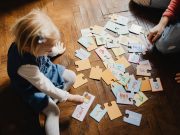
Understanding the Impact of School Environments
Schools are not just places where learning takes place; they also play a crucial role in shaping a child’s identity, social skills, emotional well-being, and cognitive abilities. The environment within schools—whether it’s academic rigor or extracurricular activities—is critical for fostering growth.
Academic Rigor vs. Extracurricular Activities
Academic environments can be challenging but essential for developing problem-solving skills, attention to detail, and resilience in the face of failure. On the other hand, engaging with diverse clubs, sports teams, music programs, or community service projects offers opportunities for social interaction, emotional expression, and life lessons.
Mixed-Environment Schools
Some schools blend academic rigor with extracurricular activities seamlessly into their curriculum, creating a dynamic learning environment that promotes holistic development. However, others may have more structured environments where academics take precedence over other interests.
Challenges Children May Face in New Environments
Children entering new school settings often face several challenges:
- Adjustment to Different Routines: Each day involves different activities and transitions between classes or clubs.
- New Social Dynamics: Understanding the dynamics of peer groups, including leadership roles and social hierarchies can be complex for younger children.
- Academic Expectations: Meeting new academic standards in a structured environment might feel overwhelming to some students.
What Parents Can Do
Parents play a pivotal role in supporting their child’s development across different environments:
Open Communication with Teachers:
- Regularly try to communicate about your child’s progress and any concerns they may have.
- Encourage open dialogue between the school, parents, and children to ensure consistent support.
Encouraging Independence:
- Allow your child to make choices within reasonable limits that promote independence (e.g., choosing what clothes to wear or which club to join).
- Teach problem-solving skills through everyday situations at home rather than just academic settings.
Promoting Emotional Expression and Support:
- Listen actively when they express their feelings about new environments.
- Encourage them to share experiences with peers, fostering a sense of belonging in diverse groups or clubs.
Balancing Academics and Extracurricular Activities:
- Help your child balance academic responsibilities against extracurricular activities by setting realistic expectations for time management.
- Prioritize the importance of both learning academically while also engaging with their interests outside school hours.
Building a Supportive Home Environment:
- Create an atmosphere where children feel safe, supported, and encouraged to explore new environments without fear or judgment.
- Foster curiosity by asking open-ended questions about experiences in different settings.
Conclusion
Understanding the impact of various school environments on child development is crucial for parents. By fostering a supportive home environment that encourages communication with teachers, promoting independence, encouraging emotional expression, balancing academic and extracurricular activities, and building a strong support system within their family, parents can help children navigate new challenges effectively.
Remember, every child develops differently in different settings; what works well at one school might not work as well elsewhere. The key is to remain flexible while providing consistent guidance that supports your child’s growth across all environments they encounter during the early years of life.














